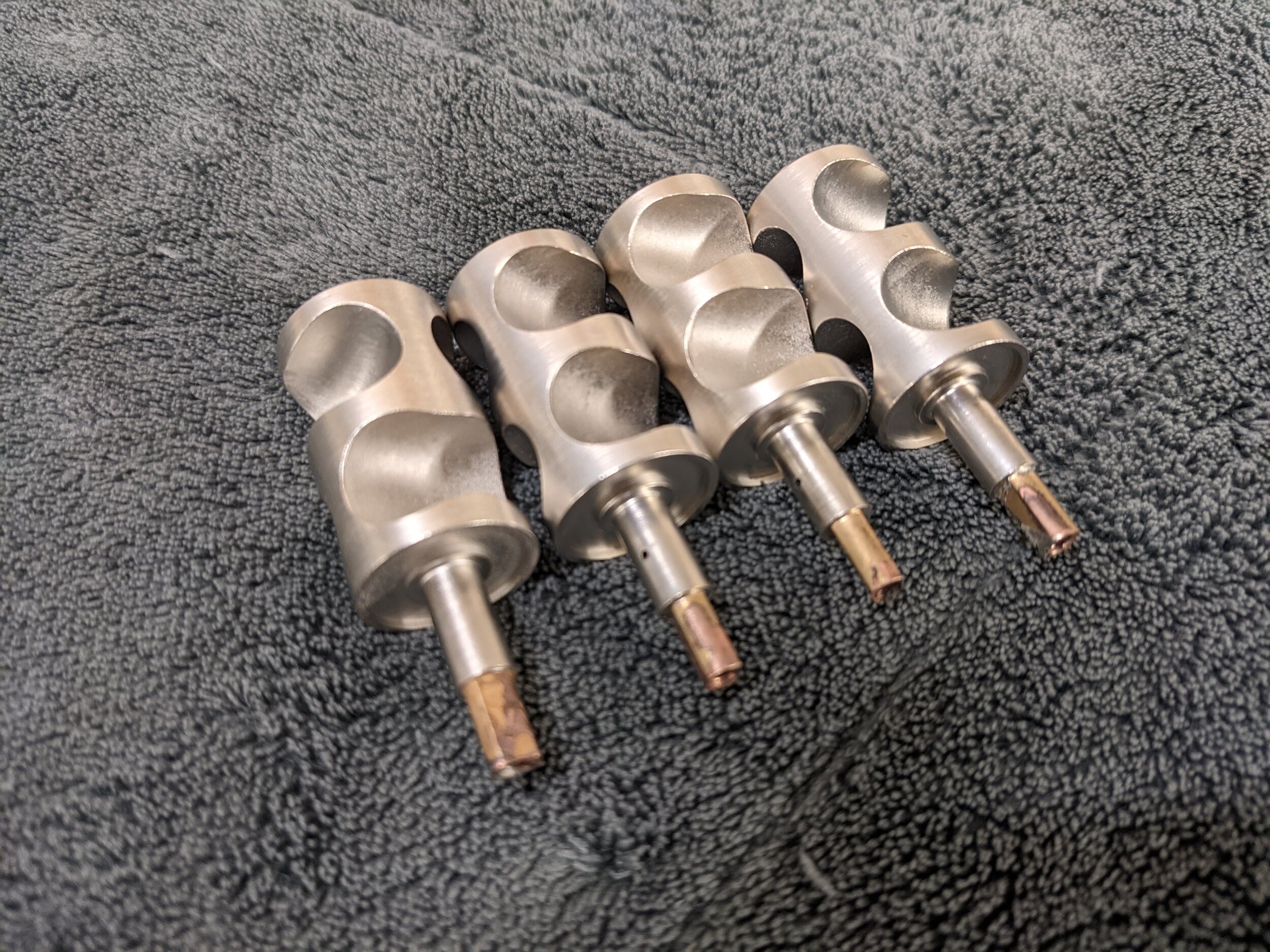At your service
Same day ultrasonic cleaning
The instrument is carefully disassembled and looked at further for any potential areas that may need (additional) attention. The horn is then placed in the ultrasonic tank for cleaning. The valves and the small parts are placed in a solution of Simple Green that is then floated on top of the tank much like a double boiler in cooking.
Before ultrasonic cleaning, the slide tubes of the crooks are polished with a high grade micromesh paper. The lowest grit used is 1800. This removes only the dirt buildup and leaves a clean surface for the grease to grip onto when being re-assembled.
After cleaning the instrument, the leadpipe is then snaked with a soft vinyl snake as to not put any scratches into the horn. It is then rinsed thoroughly with a high powered water sprayer that removes additional debris knocked lose by the ultrasonic cleaning. It is then dried with absorbent microfiber cloths.
Once the instrument is dry the valves are oiled and placed back in the instrument using a proprietary technique that ensures a smooth and fast valve operation. The valves are then aligned and strung up with proprietary bumper material and string. Crooks are greased and put back into the horn making sure grease has spread evenly across the slide tube. It is then thoroughly test played to ensure optimal performance. This service is recommended once a year.
Full Service Cleaning
When an instrument hasn’t been professionally serviced for multiple years it may be time for a more thorough service. In a full service cleaning, any valve issues regarding play (end play and side play) are eliminated, dents that are easily reached are taken out, and solder joints that have come undone are resoldered. The instrument then goes through the same process of a yearly cleaning after that. The Full Service Cleaning is recommended for horns that have been played heavily and not seen service for +3 years.
Valve Maintenance
Over time valves can wear down causing a knocking sound when the valve is pressed. If this play is not addressed, the valve will wear unevenly causing a loss in compression and a big loss in the performance of the instrument. With regular valve maintenance, the instrument will never require a valve rebuild.
End Play Service:
End play is when the valve can be moved vertically with the top bearing hammered all the way down. A common indicator of this is a ‘metal on metal’ or clicking sound when the valves are pressed. This service is recommended to be paired with a yearly cleaning
Side Play Service:
When end play is not addressed side play will eventually develop in the horn. This is when the valves moves from side to side in the bearings. This an be easily diagnosed by hearing an audible knocking sound when the valves are pressed. The process of swedging is used to eliminate side play and because of this process, it is highly recommended this be performed while the instrument is being cleaned.
Full valve rebuilding
If a horn’s valves are not maintained, they will wear unevenly and cause a loss of valve compression over time. This reduces performance tremendously and can cause a slew of issues for the player. By using the process of electroplating and lapping, the valve gains size and seals properly in the horn once again. In many cases a valve rebuild will result in a horn that performs better than when it was new. Contact via email or phone for more details on timelines and pricing!
Valves are cleaned and prepped for copper plating
Fresh out of the nickel plating and ready for a final lapping
Ready for a final fit and compression test!





